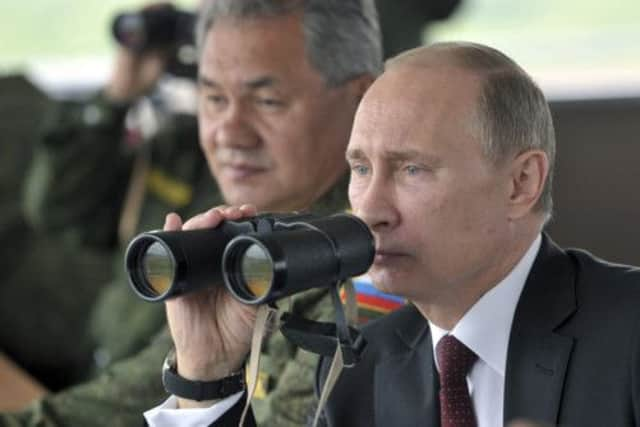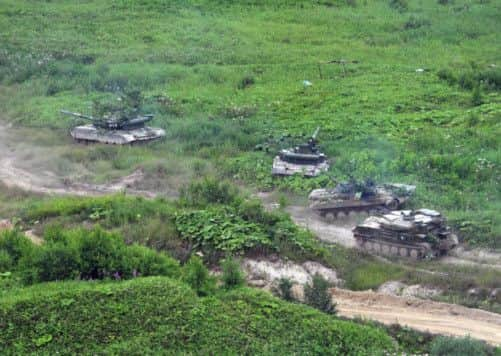Russia flexes its military muscles in Siberia


Dozens of Russia’s Pacific Fleet ships and 130 combat aircraft also took part in the exercise, which continue throughout this week. President Vladimir Putin yesterday watched some of the drills on Sakhalin Island in the Pacific, where thousands of troops were ferried and airlifted from the mainland.
Russia’s deputy defence minister, Anatoly Antonov, assured foreign military attachés that the exercise was part of regular combat training and was not directed against any particular nation, though some analysts believe the show of force is aimed at China and Japan.
Advertisement
Hide AdAdvertisement
Hide AdKonstantin Sivkov, a retired officer of the Russian military’s general staff, told the daily newspaper Nezavisimaya Gazeta that the Sakhalin part of the manoeuvres was intended to simulate a response to a hypothetical attack by Japanese and US forces.


Russia and Japan are currently in dispute over a group of Pacific islands, which Russia calls the Kurils and Japan calls the Northern Territories.
Mr Antonov said that Russia had warned its neighbours about the exercise before it started, and provided particularly detailed information to China, in line with an agreement that envisages a mutual exchange of data about military activities along their 2,700-mile border.
The Cold War-era rivals have forged what they have described as a “strategic partnership” since the 1991 Soviet Union collapse, developing close political, economic and military ties in a shared aspiration to counter US power around the world.
Russia has supplied sophisticated weapons to China, and the neighbours have conducted joint military drills, most recently a naval exercise in the Sea of Japan earlier this month.
But many in Russia have felt increasingly uneasy about the growing might of China.
Russia and China had territorial disputes for centuries. Relations between Communist China and the Soviet Union ruptured in the 1960s, and the two fought a brief border conflict in 1969. But Moscow and Beijing signed a new border treaty in 2004, which saw Russia yielding control over several islands in the Amur River. Some in Russia’s sparsely populated far east feared that the concessions could tease China’s appetite.
Alexander Khramchikhin, an independent Moscow-based military analyst, said the massive exercise held in the areas along the border with China was clearly aimed at Beijing. He said: “It’s quite obvious that the land part of the exercise is directed at China, while the sea and island part of it is aimed at Japan.”
Advertisement
Hide AdAdvertisement
Hide AdMr Khramchikhin, who recently posted an article online painting a grim picture of Russia being quickly routed in a surprise Chinese attack, said that the war games were intended to discourage China from harbouring expansionist plots.
“China may now think that Russia has finally become more aware of what could happen,” he commented.
The manoeuvres are part of recent efforts to boost the military’s mobility and combat readiness after years of post-Soviet decline, but they have far exceeded previous drills in both numbers and territorial scope.
As part of the war games, held across several time zones, some army units deployed to areas thousands of miles away from their bases. Paratroopers were flown across Russia in long-range transport planes, and some units were ferried to Sakhalin under escort of navy ships and fighter jets.
A decade of post-Soviet economic meltdown has crippled Russia’s military capability, with a lack of funds for building and maintaining equipment, and mass draft-dodging of soldiers due to corruption and bullying.
The Kremlin responded to weaknesses revealed in a brief conflict with Georgia in 2008 by launching reforms intended to turn the bloated military into a more modern and agile force.
The government also has unveiled an ambitious arms modernisation programme, though Mr Khramchikhin said the proposals were “clearly insufficient”.